Closed-circuit television (CCTV), also known as video surveillance, is the use of video cameras to broadcast a signal to a specific location on a limited set of monitors. It differs from broadcast television in that the signal is not transmitted openly, although it may employ point-to-point (P2P), point-to-multipoint (P2MP), or mesh wired or wireless links. . Although almost all video cameras fit this definition, the term is often used for surveillance in areas that require additional security or constant monitoring (videotelephony is rarely referred to as “CCTV”).
Surveillance of the public using CCTV is common in many areas around the world. Video surveillance has also generated significant debate in public about balancing its use with individuals’ right to privacy.
In industrial plants, CCTV equipment can be used to observe parts of a process from a central control room, especially if the environment observed is hazardous or inaccessible to humans. CCTV systems can operate continuously or on an as-needed basis to monitor a particular event. A more advanced form of CCTV, using a digital video recorder (DVR), provides potentially many years of recording, with different quality and display options and additional features (such as motion detection and email alerts). More recently, decentralized IP cameras, perhaps equipped with megapixel sensors, support recording directly to a network-attached storage device, or support internal flash for completely stand-alone operation.

History
An early mechanical CCTV system was developed by Russian physicist Leon Theremin (television in the Soviet Union) in June 1927. Originally requested by the CTO (Soviet Council of Labor and Defense), the system consisted of a manually operated scanning-transmitting camera and wireless shortwave transmitter and receiver with a resolution of a hundred lines. After being commandeered by Kliment Voroshilov, Theremin’s CCTV system was demonstrated to Joseph Stalin, Semyon Budyonny, and Sergo Ordzhonikidze, and was later installed in the courtyard of the Moscow Kremlin to monitor visitors.
Another early CCTV system was installed by Siemens AG at Test Stand VII in Peenemünde, Nazi Germany in 1942 to view the launch of a V-2 rocket.
In the United States, the first commercial closed-circuit television system became available in 1949, called Vericon. Little is known about Vericon except that it was advertised as not requiring government permits.
Technology
Early video surveillance systems involved continuous monitoring because there was no way to record and store the information. The development of reel-to-reel media enabled the recording of surveillance footage. These systems required manually changing magnetic tapes, a time-consuming, expensive, and unreliable process that required the operator to manually thread the tape from the tape reel through the recorder to the take-up reel. Was. Due to these shortcomings, video surveillance was not widespread. VCR technology became available in the 1970s, making it easier to record and erase information and making the use of video surveillance more common.
Type
As you know that there are different types of cameras available in the market and they are not only different in appearance but different technologies are also used in them like Network or IP cameras, Wireless cameras etc.
Analog CCTV camera
Analog cameras look like all cameras but if we talk about technology, we get to see cameras in TVL technology, TVL means TV line, the technology in which our old TVs used to work. Exactly the same technology. These cameras also work on the TV, we can also run the analog cameras DIRECTLY on the TV. But the TV line should be of the same or more than the same TV line as the camera. Only then will the camera be able to work i.e. it will be able to be shown live.
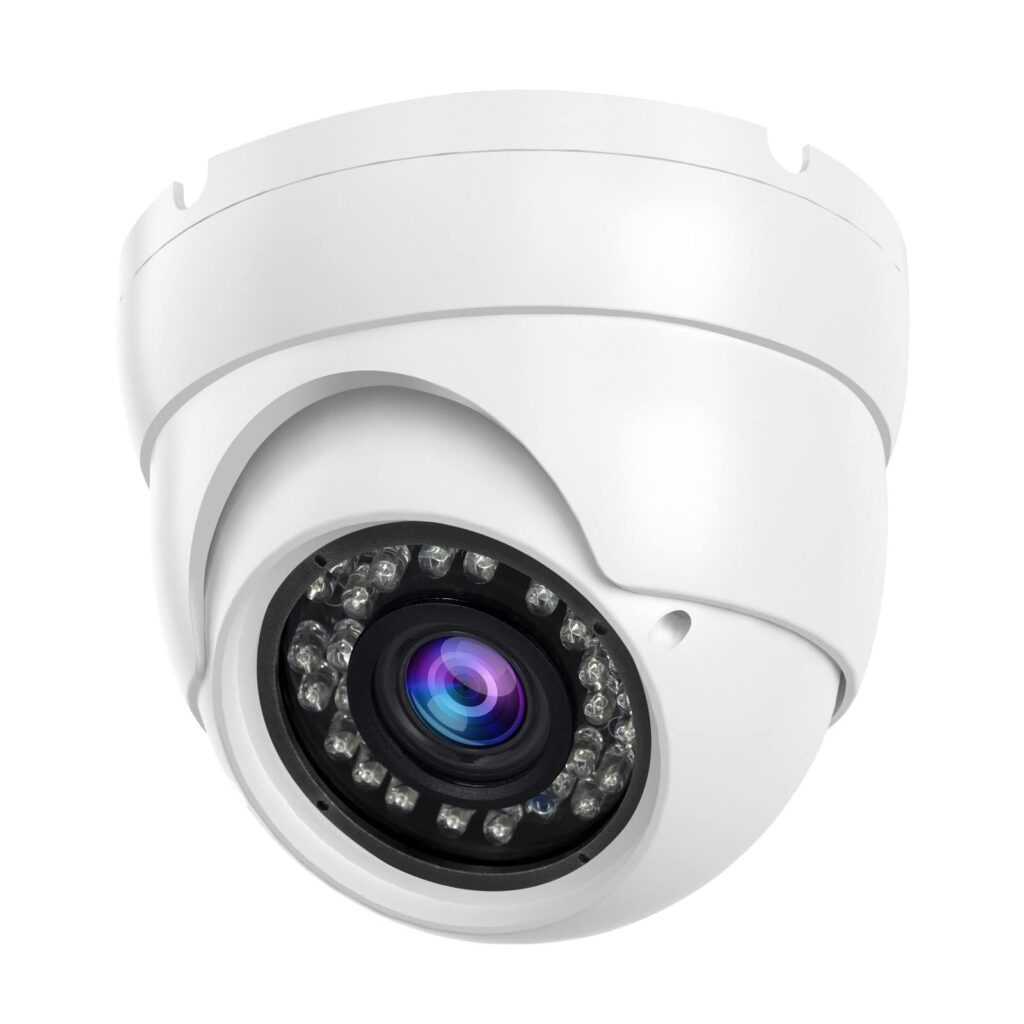
Currently, the device we use to record CCTV footage of analog camera is called DVR DIGITAL VIDEO RECORDER – DVR changes the analog signal received from ANALOG CAMERA into digital OR we get digital CCTV camera footage through the monitor. Can be seen. ANALOG CCTV CAMERA is cheaper than other cameras, hence we can see these cameras everywhere in home, office, etc.
Advantages of analog cameras
Cost: The biggest advantage of using analog cameras is that they are the cheapest cameras. Analog cameras are much cheaper, especially when you have to expand the number of cameras. Its installation also does not cost much.
Easy to install: Analog cameras have been in use since the beginning, so its sellers and vendors are easily available. You can also install these cameras yourself because they are very simple. To install, you just have to connect the BNC connector and power connector to the camera. If you have even a little knowledge about it, then you can easily install the camera. Will be able to do it.
Very simple to use (UI): For analog cameras we use DVR and its user interface is very simple. You can learn everything in one go, although the user interface of different DVR companies is different but not complicated.
Technology is getting improved: The quality of CCTV cameras and cameras is getting better from time to time, like earlier we used to see normal cameras and now you get IR cameras, very focal cameras, HD cameras, this is how technology is getting improved time to time. Is going. So today you do not need to worry so much because you can get good quality even in analog cameras.
Disadvantages of analog cameras
Video quality: If we compare these cameras with digital cameras, then they lag far behind in video quality. The maximum resolution you get with analog cameras is up to 720p, but with digital CCTV cameras you can get up to 4k resolution
More cables: These cameras are easy to install but there are a lot of wires associated with them. In every camera you need wires for video and power, so managing the wires can be an issue. Check that you have to keep the system net and clean.
IP CCTV camera
IP CAMERA is also called digital camera, these cameras are IDENTIFY through Internet protocol, so they are called IP cameras. These cameras work on digital signals, so we do not need a DVR, we can also run them directly on devices like our laptop, computer.

NVR is used to keep and view CCTV footage record of IP camera, which is also called network video recorder. We can see IP cameras in MEGA PIXEL. These cameras are better in video quality than analog cameras but IP cameras are a bit expensive in price.
Benefits of IP camera
High video quality: Like I told you earlier that we get IP cameras up to 4k resolution, so its video quality is very good. The more megapixel camera you buy, the better its quality will be.
Clean installation: Cat-6 cable is used in IP cameras due to which its installation is very clean.
Intelligence: You get many advanced features inside the camera which enhance your camera experience.
Open platform: I personally think the best thing about IP cameras is that you can run them anywhere in the network. If you want to buy an NVR for this, you can do so and if you want to run it from your computer, you can also run it from the computer.
Disadvantages of IP camera
Costly: Digital cameras are a little more expensive than analog cameras, so installing an IP camera is a bit expensive.
Storage: These cameras are high resolution cameras, so they take more space to record, for this you have to buy more storage.
Difficult to use: IP camera is a little complicated to use but not too much, if you do not have knowledge of computer then you may face some difficulty.
Wireless CCTV camera
As we can tell from its name itself, this camera is capable of showing us CCTV LIVE FOOTAGE by communicating with WITHOUT WIRE VIDEO RECORDER or WIRELESS DEVICE. These cameras work on IP and WI-FI technology, with the help of which we are able to watch CCTV LIVE footage without any wire connection. We can also see these cameras directly on our smartphones.

If we want to setup wireless cameras, then it is very costly. That’s why you may find very rare wireless cameras installed. You can keep these cameras on the table and use them in emergency cases. You will get such cameras online also at very cheap prices.
Benefits of wireless cameras
No Wire Very easy to install: There is no need to make any connection in this, you just have to provide power to the camera. And you can easily hang it on wall or ceiling.
Easy to shift: Many times when the camera has to be shifted to another place, then wired cameras face problems because we need wires for that but in wireless cameras we do not need any wires, hence you can move the wireless camera anywhere. You can also shift to but it is necessary to have power point there.
very easy to use: It is very easy to do this with these cameras, you have to install the camera app in your mobile and connect the WiFi to the camera and you can see it in the mobile computer and NVR.
Can be more affordable: Wireless cameras can be more affordable because they do not require professional installation.
Cloud storage option: Your camera footage can be frequently backed up to the cloud so you can view your cameras remotely
Disadvantages of wireless cameras
Costly: These cameras are a bit costly and the service of these cameras is also costly. If you use cloud storage for storage, then you will have to pay for this also.
No wide coverage: The biggest problem in wireless cameras is that you cannot place the camera at a great distance, you have to place the camera within the range of wifi only.
1.Dome camera
Dome camera looks like a ball cut in half. This camera is very suitable for installing in the ceiling. It looks good and does not harm the look of your home or office by installing it. Mostly you will find these cameras installed in banks, offices, and shops. You will also get to see many types of dome cameras. Generally speaking, there are two types of dome cameras. Normal Dome Camera and Vari Focal Dome Camera.
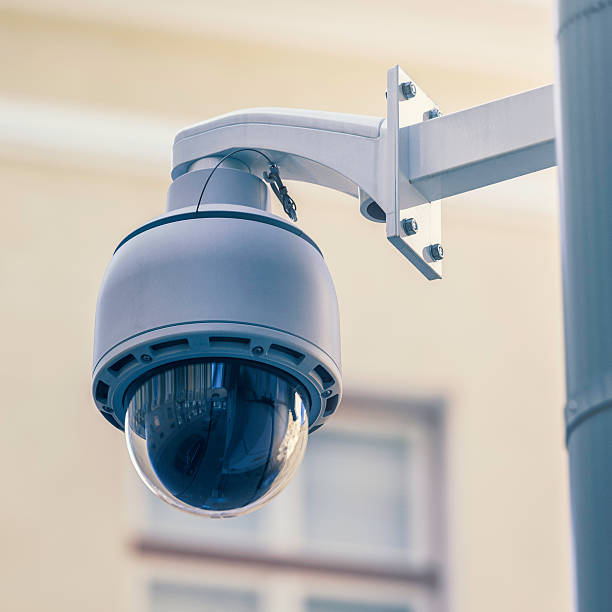
2.Normal dome camera and IR dome camera
There are two types of normal dome cameras. NORMAL DOME CAMERA OR IR DOME CAMERA. The only difference between these two is that the normal dome camera is not capable of taking footage at night. Because it does not have infrared LED and the IR dome camera can take footage in the dark. You will have to spend less money for a normal dome camera, but a night vision camera will cost you a little. You will see the normal dome camera almost the same in all environments.
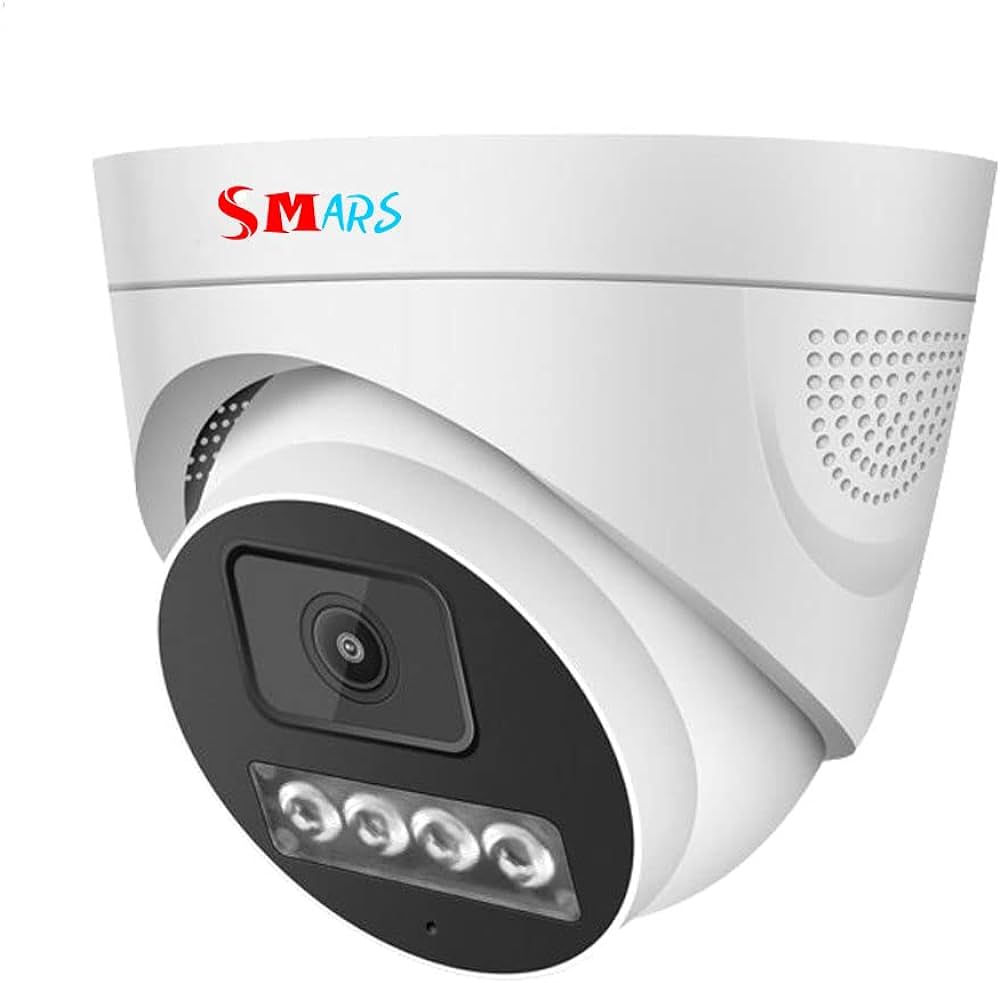
IR dome camera is more capable of taking good quality footage, but it is also affected by light, such that it does not prove to be as good in low light. If you want to buy one of the two, then no doubt you should buy IR dome camera only. Because this camera is much better than the normal dome camera. But keep in mind that there should be proper light in its focus area, only then this camera can prove to be good.
3. V/F camera or IR V/F dome camera
As you can guess from its name, this camera can be something special regarding focus. In this camera you get the facility of optical zoom. Through which you will be able to cover your subject well in the camera. And in this camera you can also set its focus manually.
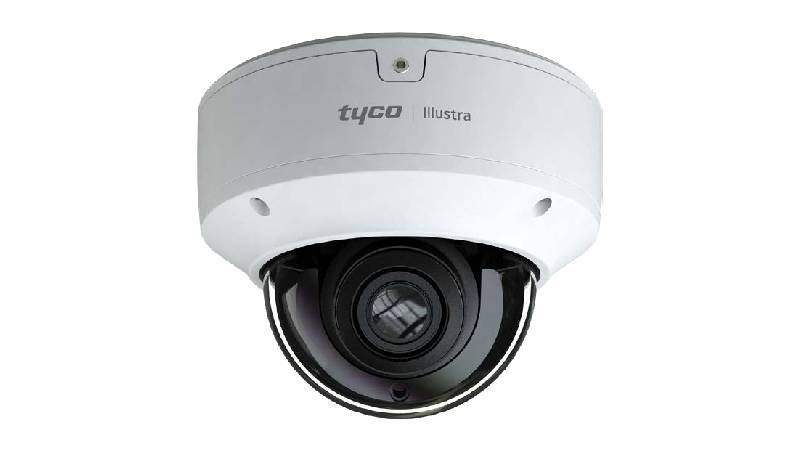
Another good thing about a very focal camera is that its lens is bigger than a normal camera, which means you can take better footage. IR VERY focal camera along with zoom and focus and IR TECHNOLOGY means this camera will be able to show us CCTV camera footage in black and white even at night.
4. Bullet camera
Bullet camera looks like a cylinder or a piece of stick. This camera is mostly used outdoors. You must have seen it outside an office, at a toll gate intersection, or in a parking area. This camera works well outdoors, its quality is quite good. These cameras are also of two types but you get night vision at both the places, this is a good thing. In this you will get a normal bullet camera and a very focal bullet camera.
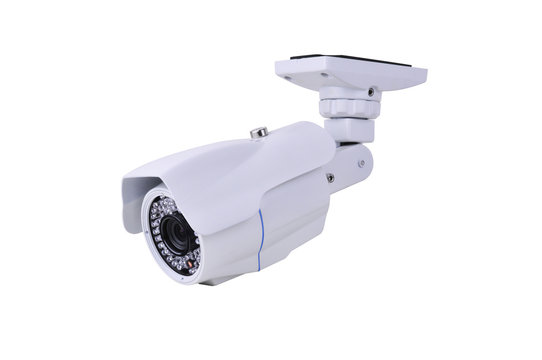
5. Box type cameras
This camera looks somewhat like a bullet camera but this camera is a little flat and looks like a box. In this camera you get a separate lens like any DSLR camera. Along with the PCB, BNC and power pin connectors are connected to the OUTPUT of this camera. The lens of these cameras is quite large due to which they are capable of taking very good footage. You do not get this camera with night vision. You will rarely see these types of cameras.

6. HD CCTV camera
During the 1990s, digital multiplexing was developed, allowing multiple cameras to record simultaneously, as well as time lapse and motion-only recording. This saved time and money which led to increased use of CCTV.
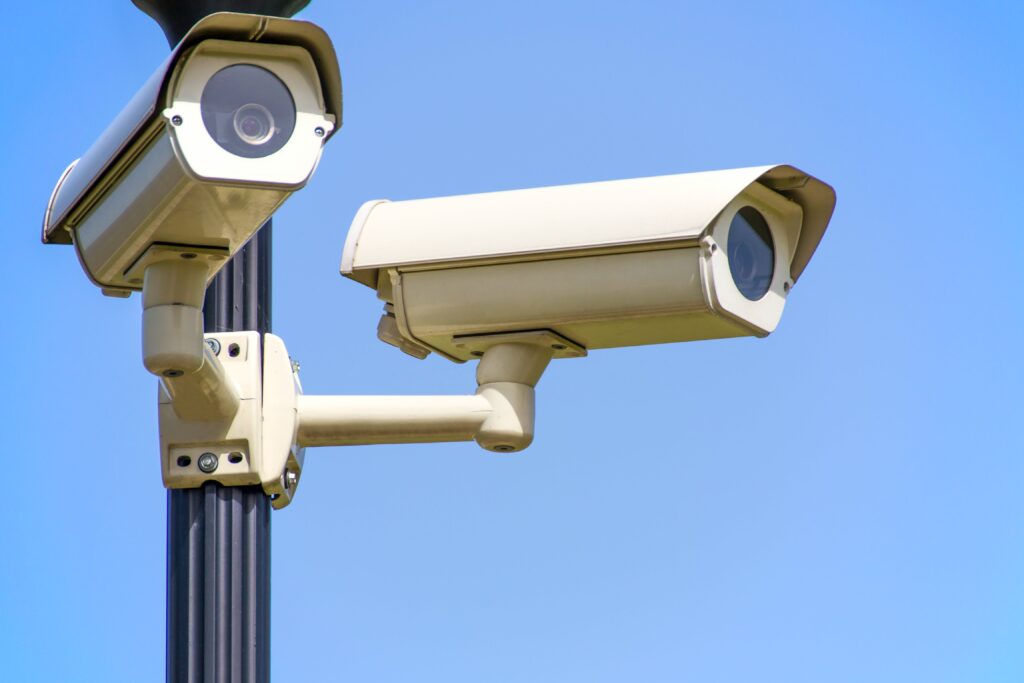
CCTV technology has recently been enhanced with the shift towards Internet-based products and systems and other technological developments.
Application
Early CCTV systems were installed in central London between 1960 and 1965 by the Metropolitan Police. By 1963, CCTV was being used to monitor traffic in Munich.
Closed-circuit television was used as pay-per-view theatrical television for sports such as professional boxing and professional wrestling, and from 1964 to 1970, for the Indianapolis 500 automobile race. Boxing broadcasts were broadcast live in select venues, mostly theaters, where spectators paid for tickets to see the fights live. The first fight with closed-circuit broadcasting was Joe Lewis vs. Joe Walcott in 1948. The popularity of closed-circuit broadcasting peaked in the 1960s and 1970s with Muhammad Ali, “The Rumble in the Jungle” fight in 1974 attracted 50 million CCTV viewers worldwide, and the “Thrilla in Manila” in 1975. Attracted 100 million CCTV viewers worldwide. In 1985, WrestleMania I was the professional wrestling show planned to be watched by over one million viewers. By the end of 1996, the Julio César Chávez vs. Oscar De La Hoya boxing fight had received 750,000 viewers. Although closed-circuit television was gradually replaced by pay-per-view home cable television in the 1980s and 1990s, it is still in use today for most awards shows and other programs that are broadcast live in most locations. Occur but are not broadcast as such on network television, and are re-edited for later broadcast.
In September 1968, Olean, New York was the first city in the United States to install CCTV video cameras on its main business street in an effort to fight crime.
Mary Van Britton Brown received a patent in 1969 for her design of a CCTV-based home security system.
Another early appearance was in Times Square in New York City in 1973. The NYPD established it to prevent crime in the area; However, the cameras did not see much of a drop in crime rates. Nevertheless, during the 1980s video surveillance began to spread across the country, particularly targeting public areas. This was considered a cheaper way to prevent crime than increasing the size of the police department. Some businesses, especially those prone to theft, began using video surveillance. Since the mid-1990s, police departments across the country installed cameras in increasing numbers in a variety of public spaces, including housing projects, schools, and public park departments. CCTV later became common in banks and shops to discourage theft by recording evidence of criminal activity. In 1997, 3,100 CCTV systems were installed in public housing and residential areas in New York City.
Experiments in the UK during the 1970s and 1980s, including outdoor CCTV in Bournemouth in 1985, led to several large testing programs later that decade. The first use by local government was in King’s Lynn, Norfolk in 1987.
Crime prevention
A systematic review conducted in 2009 by researchers at Northeastern University and the University of Cambridge used meta-analytic techniques to aggregate the average effects of CCTV on crime across 41 different studies.
The studies included in the meta-analysis used a quasi-experimental evaluation design that included pre- and post-measures of crime in experimental and control areas. However, several researchers have pointed out the methodological problems associated with this research literature. First, the researchers have argued that the British car park studies included in the meta-analysis could not accurately control for the fact that CCTV was introduced simultaneously with other safety-related measures. Second, some have noted that, in many studies, there may be issues of selection bias as the introduction of CCTV was potentially endogenous to past crime trends. In particular, if CCTV is implemented in response to crime trends the estimated effects may be biased.
It has been argued that the problems of selection bias and endogeneity can be addressed by robust research designs such as randomized controlled trials and natural experiments. A 2017 review published in the Journal of Scandinavian Studies in Criminology and Crime Prevention compiled seven studies that used such research designs. The studies included in the review found that CCTV reduced crime on public streets and urban subway stations by 24–28%. It was also found that CCTV could reduce unruly behavior in football stadiums and theft in supermarkets/mass merchant stores. However, there was no evidence that CCTV was having a desirable effect on parking facilities or suburban subway stations. Furthermore, reviews indicate that CCTV is more effective in preventing property crimes than violent crimes.
Another question as to the effectiveness of CCTV for policing is the length of time the system is up; In 2013, Philadelphia city auditors found that the $15M system was operational only 32% of the time. There is strong evidence that CCTV helps detect and convict criminals; For example, UK police forces routinely search for CCTV recordings after crimes. Furthermore, CCTV has played a vital role in tracing the movements of suspects or victims and is considered by counter-terrorism officials as a fundamental tool in tracking terrorist suspects. Large-scale CCTV installations have played an important role in security against terrorism since the 1970s. Cameras have also been installed on public transport in the hope of preventing crime.
A more open question is whether most CCTV is cost-effective. While low quality home kits are affordable, professional installation and maintenance of high definition CCTV is expensive. Gill and Spriggs conducted a cost-effectiveness analysis (CEA) of CCTV in crime prevention, which showed little monetary savings with the installation of CCTV, as most crimes prevented resulted in little monetary loss. However critics noted that non-monetary value benefits could not be included in traditional cost-effectiveness analysis and were omitted from their studies. A 2008 report by UK police chiefs concluded that only 3% of crimes were solved by CCTV. In London, a report by the Metropolitan Police showed that only one crime was solved per 1000 cameras in 2008. In some cases, CCTV cameras themselves have become the target of attacks.
Cities such as Manchester in the UK are using DVR-based technology to improve access to crime prevention.
In October 2009, an “Internet Eyes” website was announced that would pay members of the public to view CCTV camera images from their homes and report any crimes they see. The goal of the site was to add “more eyes” to cameras that may be inadequately monitored. Civil liberties campaigners criticized the idea as “an unpleasant and worrying development”.
In 2013 Oaxaca hired deaf police officers to lip read conversations to uncover criminal conspiracies.
Since 2012, thousands of CCTV cameras have helped deter loan sharks, catch litterbugs and prevent illegal parking in Singapore, according to government figures.
Solve crimes
CCTV can also be used to help solve crimes. In London alone, an average of six crimes are solved every day using CCTV footage.
Vehicle traffic
Many cities and motorway networks have extensive traffic-monitoring systems, using closed-circuit television to detect congestion and report accidents. However, many of these cameras are owned by private companies and transmit data to drivers’ GPS systems.
Highways England has a publicly owned CCTV network of over 3000 pan-tilt-zoom cameras covering the British motorway and trunk road network. These cameras are primarily used to monitor traffic conditions and are not used as speed cameras. The number of cameras on Highways England’s CCTV network is likely to increase significantly over the next few years, with the addition of stationary cameras to the active traffic management system.
The London Congestion Charge is enforced by cameras placed on and inside the boundaries of congestion charge zones, which automatically read the number plates of vehicles entering the zone. If the driver does not pay the charge, a fine will be imposed. Similar systems are being developed as a means of locating cars that have been reported stolen.
Other surveillance cameras function as traffic enforcement cameras.
Pedestrian traffic
In Mecca, CCTV cameras are used to monitor (and thus manage) crowd flow.
In the Philippines, Barangay San Antonio used CCTV cameras and artificial intelligence software to detect crowd formation during a disease outbreak. Whenever a crowd gathered at a particular place in the city, security personnel were sent.
Increasing safety and security in public transportation
CCTV cameras in a driver-only train may allow the driver to close the doors and confirm that people are away from the doors before starting the train.
A test of facial recognition cameras installed on trams by RET in 2011 ensured that the people who were banned were not in any way surreptitious.
A test of facial recognition cameras installed on trams by RET in 2011 ensured that the people who were banned were not in any way surreptitious.
Sporting events
Many sports in the United States use CCTV inside the venue, either for display on the stadium or field scoreboard, or in concourses or restroom areas to allow fans to watch the action outside the seating bowl. The cameras send the feed to a central control center where the producer selects the feed to send to television monitors that fans can watch. CCTV monitors are often installed in lounges, hallways and restrooms for attendees to watch the events. In a test with CCTV cameras, football club fans no longer need to identify themselves manually, but can pass through freely after being authorized by the facial recognition system.
Employee monitoring
Organizations use CCTV to monitor the activities of workers. Each action is recorded as an information block with a subtitle that explains the operation performed. This helps track workers’ actions, especially when they are performing important financial transactions, such as correcting or canceling a sale, withdrawing money or changing personal information.
Actions the employer may want to monitor may include
Scanning of goods, selection of goods, introduction of price and quantity;
Input and output of operators into the system when entering passwords;
operations deleting and modifying existing documents;
Implementation of certain operations, such as financial statements or operations with cash;
Goods carrying, revaluation scraping and counting;
Control in the kitchen of a fast food restaurant;
Changes to settings, reports and other official functions.
Each of these operations is transmitted with a description, allowing detailed monitoring of all the operator’s actions. Some systems allow the user to search for a specific event based on the time and text description of the event and perform statistical evaluation of the operator’s behavior. This allows the software to predict deviations from standard workflow and record only abnormal behavior.
Use in schools
In the United States, Britain, Canada, Australia and New Zealand, CCTV is widely used in schools due to its success in preventing bullying, vandalism, monitoring visitors, and maintaining records of evidence of crime. There are some restrictions, including cameras not being installed in areas where there is a “reasonable expectation of privacy”, such as bathrooms, gym locker areas and private offices (unless consent is given by the occupant of the office). Cameras are generally acceptable in hallways, parking lots, front offices where students, staff and parents come and go, gymnasiums, cafeterias, supply rooms and classrooms. Some teachers object to the installation of cameras.
A study of high school students in Israeli schools shows that students’ views on CCTV used in school are based on how they think about their teachers, school, and authorities. It also says that most of the students do not want CCTV to be installed inside the classroom.
Use in private homes
Many homeowners choose to install CCTV systems inside or outside their homes, sometimes both. CCTV cameras are an effective deterrent to potential intruders as their use increases the risk of identification through camera footage. If someone wanders into an affluent suburb looking for the easiest house that has an obvious CCTV system, alarm or any other security measures, that makes the house a more difficult target, so they will likely move on to the next house. ,
Modern CCTV systems can be monitored through mobile phone apps that allow people to view live footage of their home from any location with internet coverage. Some systems offer motion detection so that an alert can be sent to the phone when motion is detected.
Criminal use
Criminals can use surveillance cameras to keep an eye on the public. For example, a hidden camera in an ATM can capture people as they enter their PIN, without their knowledge. The devices are so small that they cannot be noticed, and they are placed in a location where they can monitor the machine’s keypad as people enter their PIN. Images can be transmitted wirelessly to the criminal. Even data from legitimate surveillance cameras sometimes ends up in the hands of people who have no legal right to obtain it.
Use in shopping malls and retail stores
Theft is a major concern for many department stores and shopping malls. CCTV helps protect the property of shops, and ensures the safety of employees and customers. It provides a safe, secure and engaging experience for visitors.
Choosing the right camera is even more important. A CCTV system should have
- A high resolution camera to ensure image clarity
- High capacity digital storage to ensure 24/7 recording
- perfect location with good lighting

Terrorism
Material collected by surveillance cameras has been used as a tool in post-event forensics to identify the tactics, techniques, and perpetrators of terrorist attacks. In addition, there are various projects – such as INDECT – that aim to detect suspicious behavior of individuals and crowds. It has been argued that terrorists will not be afraid of cameras, terrorist attacks are not really the subject of current use of video surveillance and terrorists may even see it as an additional channel for publicity and publication of their acts. In Germany calls for expanded video surveillance by the country’s main political parties, the SPD, CDU and CSU, have been dismissed by a member of the left party as “little more than a placebo for a subjective sense of security”.
Computer-controlled analysis and identification
Video content analysis, also called video analytics, is the ability to automatically analyze video to detect and determine temporal events, not based on an image, but based on object classification. Over the past decade, improved VCA features have been developed. In addition to recognizing specific shapes and colors, VCA applications can now analyze more complex scenarios.
Advanced VCA applications can accurately classify object types based on their shape and motion behavior and they can also measure object motion. Some video analysis applications can be used to virtually enforce rules in specified areas. These rules may be related to access control. For example, they may describe which objects can enter a specific area, when they are allowed to enter, or under what circumstances. In fact, the applicable rules may also relate to different speed conditions. VCA based CCTV systems can be set to detect anomalies in the crowd, for example a person moving in the opposite direction in which they would normally be expected (for example deboarding a plane at an airport or exit from the entrance in the metro).
There are different approaches to implementing VCA technology. Data can be processed on the camera itself (edge processing) or by a centralized server. Both approaches have their advantages and disadvantages.
For many people, the development of CCTV in public areas, linked to computer databases of people’s photographs and identities, represents a serious violation of civil liberties. Critics fear that such technology will eliminate anonymity in public places.
Retention, storage and preservation
There is a cost in maintaining the images produced by CCTV systems. The amount and quality of data stored on storage media is affected by the compression ratio, images stored per second, image size, and retention period of the video or images. DVRs store images in various proprietary file formats. Recordings can be kept for a predetermined time and then automatically archived, overwritten or deleted, this period being determined by the organization that originated them.
